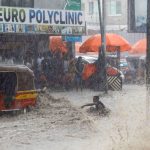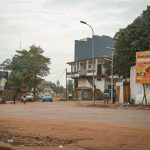[ad_1]
Borota refugee site, Chad – The late afternoon sun beat down as a boy, barely three years old, picked up a bullet casing from the dusty ground. In his tiny hands, the shiny war remnant looked like the heaviest of toys.
Nearby, a group of women emerged from their makeshift shelters fashioned out of bright garments knotted on wooden sticks. A song blared out in the distance – its lively beat at odds with the harrowing stories of murder, escape and agony that are whispered throughout this remote corner of eastern Chad.
“As the night descended, they came and killed,” said Zara Khan Umar, a refugee from neighbouring Sudan’s Darfur region who is now sheltering at an informal settlement in Borota. “Any men they find on their way, they kill them.”
The 40-year-old is one of the more than 90,000 people who have trekked across the border in recent weeks to escape the fighting that has gripped Sudan. In mid-April, a rivalry between Sudan’s army chief, Abdel Fattah al-Burhan, and the commander of a paramilitary group known as the Rapid Support Forces (RSF), Mohamed Hamdan “Hemedti” Dagalo, exploded into war. While the Sudanese capital, Khartoum, has been the main theatre of battle so far, the fighting has also spread in cities across the conflict-weary Darfur region.
There, the resurgence of violence quickly took an intercommunal dimension, pitting armed Arab men against fighters from the Masalit ethnic group in confrontations that witnesses and survivors described as ferocious.
[ad_2]
Source link












